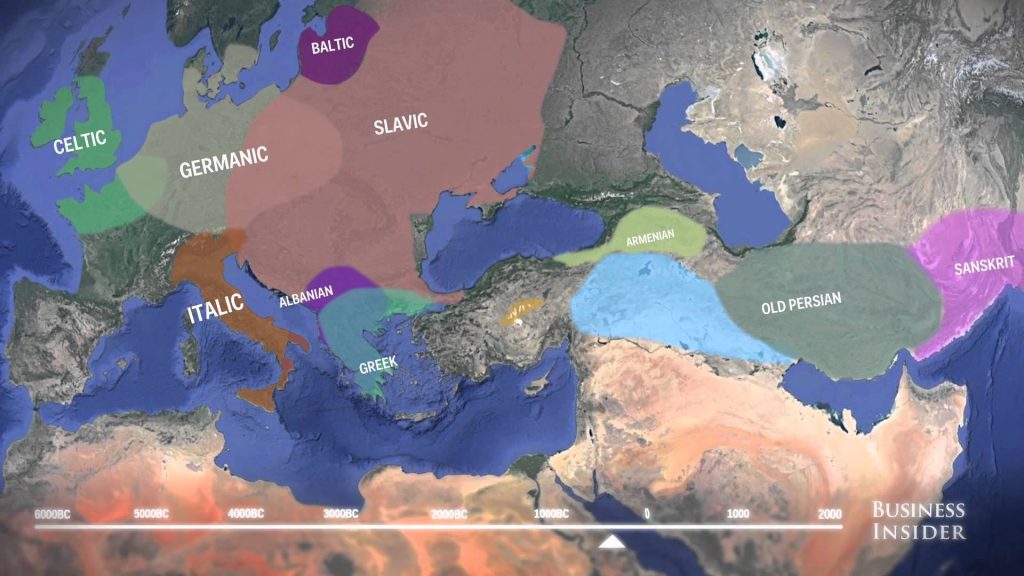I saw this short animation, showing the spread and the speciation of the languages of the Indo-European linguistic group when it was released exactly a year ago but I somehow forgot to share it at the time. I think it’s fascinating. You see how all of the Germanic and Romance languages grew out of an earlier Balto-Slavic language and how Sanskrit and Hindi descended from an ancient Indo-Iranian language, making Old Persian older than Sanskrit.
This animation is based on a study conducted at the University of Auckland, New Zealand, which challenges the long-held view that Indo-European languages originated from a single language that sprang up somewhere northeast of the Black Sea.
The Indo-European linguistic group is the largest in the world, constituting 46% of all natively-spoken languages, which include English and all of the Germanic languages, all of the Romance languages, the Slavic languages, Greek, Armenian, Farsi, Urdu, Hindi and the many lesser-known languages related to these.
You may be surprised to know that the most widely spoken Indo-European languages by native speakers are 1) Spanish, 2) English, 3) Hindustani (Hindi and Urdu), 4) Portuguese, 5) Bengali, 6) Russian, 7) Persian and 8) Punjabi, each with over 100 million speakers.
Kiwi Evolutionary Biologist, Dr. Quentin Atkinson arrived at his conclusion that the original proto-Indo-European language originated in the land now known as Turkey, based on linguistic drift. It didn’t work, when he tried to make the point of origin north of the Black Sea.
Ironically, the language spoken in Turkey today, written with a Roman alphabet and spoken by a people who do not resemble East Asians comes from a linguistic group, which originated in the area in and around modern-day Mongolia.
English is similarly the native language of tens of millions of people who are not from England.
The Turkish language was brought to Anatolia by migrations of Turkic-speaking peoples between the 6th and 11th centuries, during which time the region made a transition from being predominantly Greek-speaking and Christian into one that is Turkish-speaking and Muslim.
Then, after millennia of being colonized successively by the empires of the Hittites, Greeks, Romans and Persians, Turkey proceeded to itself become the center of the Ottoman Empire from 1299 to 1922 CE, during which time it was one of the world’s greatest centers of wealth, military and cultural power, controlling most of the lands around Mediterranean Sea until the end of World War I.

